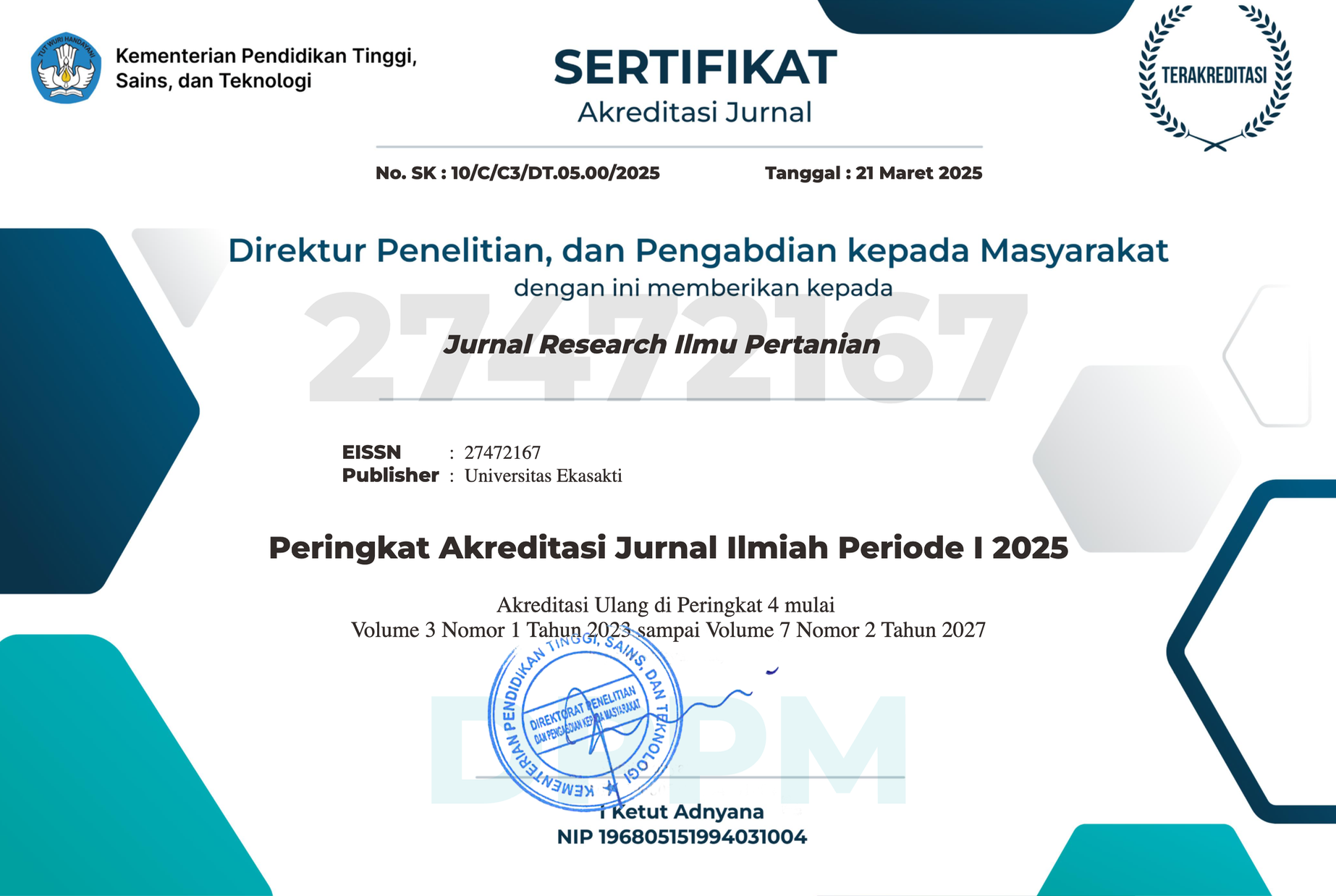KARAKTERISTIK SOSIS TEMPE MENGGUNAKAN BERBAGAI JENIS TEPUNG
DOI:
https://doi.org/10.31933/ztdhwa90Keywords:
Tempe, Tapioca, Corn, Brown rice, Purple Sweet Potato, Sago, SausageAbstract
The aim of research was to determine the quality and storey of favorit consumer to tempeh sausage with using various types of flour. The method used was an exploratory method with 5 levels of treatment and 3 replications. This study uses several types of flour in making tempeh sausages that is; tapioca flour, corn flour, brown rice flour, purple sweet potato flour and sago flour. The results showed that the use of various types of flour in making tempeh sausage was favored by con summers, up to standard and also quality of sausage specified by SNI. The results of chemical analysis of the best and most preferred tempeh sausage by consumers are found in making tempeh sausage using purple weet potato flour with a water content of 55,98%, ash 1,35%, fat 21,60%, protein 13,34% and carbohydrates 6,25%.
Downloads
References
Albaniyah Z. 2011. Proses produksi sosis tempe. Laporan Tugas Akhir. Program Studi Diploma III Teknologi Hasil Pertanian Fakultas Pertanian. Universitas Sebelas Maret. Surakarta.
AOAC. 2005. Official methods of analysis. Assiciation of Official Analtical Chemistry.
Astawan. 2010. Tepung tapioka, manfaatnya dan cara pembuatannya. http://aremaipb.wordpress.com/.
[BSN] Standarisasi Nasional Indonesia. 2009. Tepung beras. Badan Standarisasi Nasional. Jakarta.
Candra A. 2012. Enam alasan beralih ke nasi merah. Kompas. Com.
Figura LO dan AATeixera. 2007. Food phsik: pynical properties measurement and application.
Berlin. Springer-Verlag
Gunawan R, Edison dan Suparmi. 2012. Pengaruh penambahan rumput laut (Eucheuma cottonii) pada pengolahan mie kering terhadap penerimaan konsumen. Skripsi. Fakultas Perikanan Universitas Riau. Pekanbaru.
Harmanto N dan P Utami. 2013. Jamu ajaib penakluk diabetes. Jakarta: PT. Agromedia. Pustaka.
Hellyer J. 2004. Quality testing with instrumental texture analysis in food manufactering. http://www. Labplusinternational.com.
Khomsan A. 2004. Peranan pangan dan gizi untuk kualitas hidup. Jakarta: PT. Gramedia Widiasarana.
Papilaya, 2008. Sagu Sebagai Pangan Organis Fungsional Untuk Kesehatan. Bogor: Kanisius. Price JF, Bernand SS. 1987. The Science of Meat and Meat Product. Ed ke-3. San Fransisco:
Freeman and Co.
Ratnaningsih. 2009. Pengaruh jenis kacang tolo, proses pembuatan dan jenis inokulum terhadap perubahan zat-zat gizi pada fermentasi tempe kacang tolo. Jurnal Penelitian Saintek. 1 (14). 97-128
Ridwan. 2008. Sifat-sifat organoleptik. http://tekhnologi-hasil- pertanian.blogspot.com/2008/08/sifatsifat-organoleptik_8614.html.
Samaee SM, E Mente, A Estevez, G Gimenez dan F Lahnsteiner. 2010. Embryo and larva development in common dentex (dentex dentex), a pelagophil teleost: the quantitative composition off egg-free amino acid and their interrelations. Theriogenology.
[SNI] Standar Nasional Indonesia. 1995. Syarat mutu sosis berdasarkan SNI-01-3820-1995.
Song YS, J Frias, M Villaluenga, V Valdeverde, EG Mejia. 2008. Immunoreactivity reduction of soy bean meal by fermentation of commercial soy product. Food Chemistry.
Suarni dan IU Firmansyah. 2005. Beras jagung: Prosessing dan kandungan nutrisi sebagai bahan pangan pokok. Prosiding seminar dan lokakarya nasional.
Suarni dan M Yasin. 2011. Jagung sebagai sumber pangan fungsional. Iptek Tanaman Pangan Vol. 6 No. 1
Suarni. 2009. Komposisi nutrisi jagung menuju hidup sehat. Prosiding Seminar Nasional Serealia. Balai Penelitian Tanaman Serealia. ISBN:978-979-8940-27-9
Wau ER, Suparman dan Desmilati. 2010. The effects of different processing method toward quality of shimp (Acateserythreus) sausage. Jurnal perikanan dan kelautanVol 15(1): 71- 82.
Widhaswari VA dan WDR Putri. 2014. Pengaruh modifikasi kimia dengan STTP terhadap karakteristik tepung ubi jalar ungu. Jurnal Pangan dan Agroindustri 2 (3): 121–128.
Winarno FG. 1992. Kimia pangan dan gizi. Gramedia Pustaka. Jakarta.
Downloads
Published
Issue
Section
License
Copyright (c) 2021 Suparma Jeki, Asnurita, Dian Pramana Putra, Wellyalina (Author)

This work is licensed under a Creative Commons Attribution 4.0 International License.











